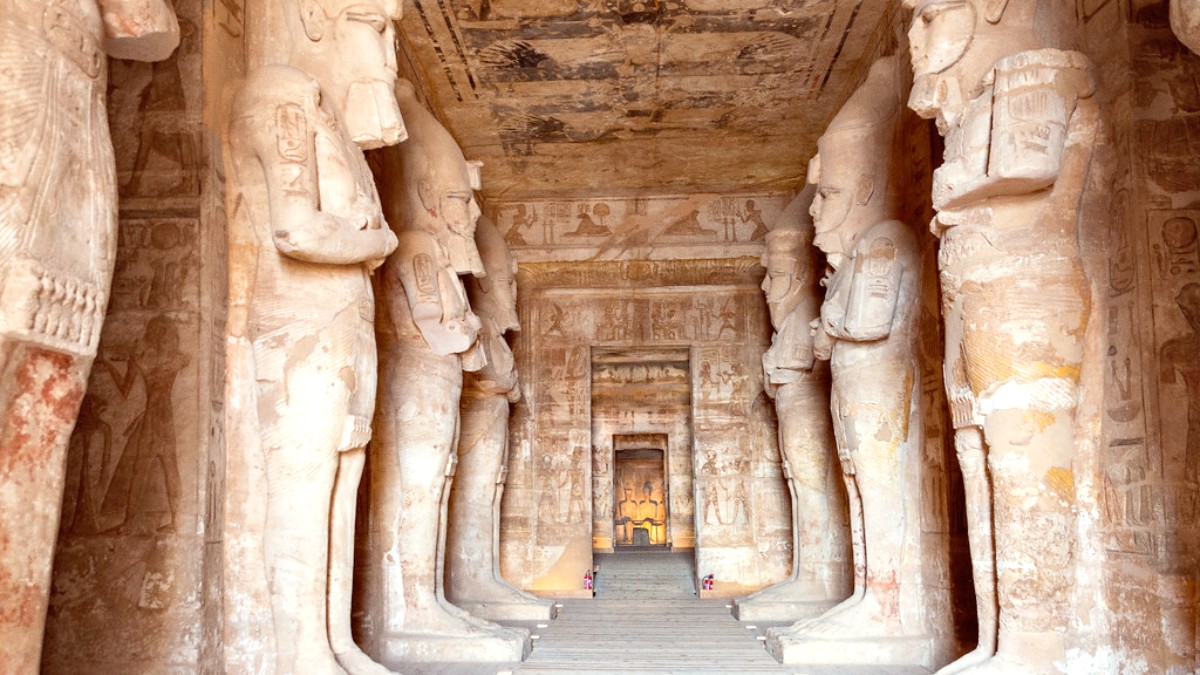
Egypt
These temples, carved over 3,000 years ago, display the ambition of Ramses II, a pharaoh whose legacy continues to resonate. His vision transformed the landscape, leaving behind a monument that even today commands attention.
Beyond its ancient past, Abu Simbel is a modern miracle: its relocation in the 1960s. This feat, undertaken to save the temples from being submerged by the Aswan High Dam, saw international teams dismantle and rebuild each colossal structure on higher ground.
This modern triumph of engineering and cooperation makes the visit even more profound, showing how humanity can unite to protect shared heritage.
The history of Abu Simbel begins in the 13th century BC, during the reign of Pharaoh Ramses II. This pharaoh, one of Egypt's most powerful and longest-reigning rulers, commissioned these two massive rock-cut temples. They served multiple purposes: to display his divine power, to honor important deities, and to commemorate his victory at the Battle of Kadesh.
The temples remained largely forgotten for centuries, buried by sand, until Swiss explorer Johann Ludwig Burckhardt rediscovered them in 1813. The most recent chapter involves its extraordinary relocation project in the 1960s to save them from the Aswan High Dam, an unprecedented global effort.
Sunlight penetrates the sanctuary’s innermost chamber.
Ramses II, Ra-Horakhty, and Amun.
Ptah, the god of darkness.
Around February 22 and October 22 annually.
Ancient astronomical knowledge and divine connection.
Dedicated to Ramses II himself, deified in his lifetime, and to the gods Ra-Horakhty, Amun, and Ptah. Its facade features four colossal seated statues of Ramses II, each over 20 meters (65 feet) high. These statues display Ramses II at different stages of his reign, symbolizing his eternal presence and enduring power.
Inside, intricate reliefs depict his military campaigns, especially the Battle of Kadesh, where he famously led his forces against the Hittites.
Often called the Small Temple, it dedicates itself to the goddess Hathor and Ramses II's chief consort, Queen Nefertari. Its facade features standing statues of Ramses II and Nefertari, depicted as equal in height, a testament to her respected position.
The relocation maintained the original orientation of the Great Temple, allowing the Sun Alignment phenomenon to continue, albeit on slightly different dates. This modern feat of engineering matches the original construction in its impressive scope.
Abu Simbel presents a powerful, unmissable experience for any traveler interested in ancient Egypt. Its remote location adds to its allure, making the journey part of the adventure. The twin temples, carved from solid rock, showcase the monumental ambition of Ramses II and the artistic skill of ancient Egyptian craftsmen.
They provide a tangible connection to a civilization that shaped human history.
Early mornings offer cooler temperatures and fewer crowds. Consider October to April for optimal comfort.
Visitors commonly make a day trip from Aswan, requiring a very early start. The desert drive provides memorable views.
Photography inside the temples requires a special ticket. Flash photography is typically prohibited.
Practical considerations for a visit include dressing modestly, protecting oneself from the sun, and staying hydrated. Guides often accompany tours, making the complex narratives of the temples accessible.
October-April. Pleasant weather but expect larger crowds and higher prices.
May, September. Fewer crowds, good prices, but warmer temperatures.
June-August. Fewest crowds, lowest prices, but intense heat.
Cover shoulders and knees. This displays respect for local customs.
Drink plenty of sealed bottled water throughout the day.
Sturdy, comfortable walking shoes are paramount for uneven surfaces.